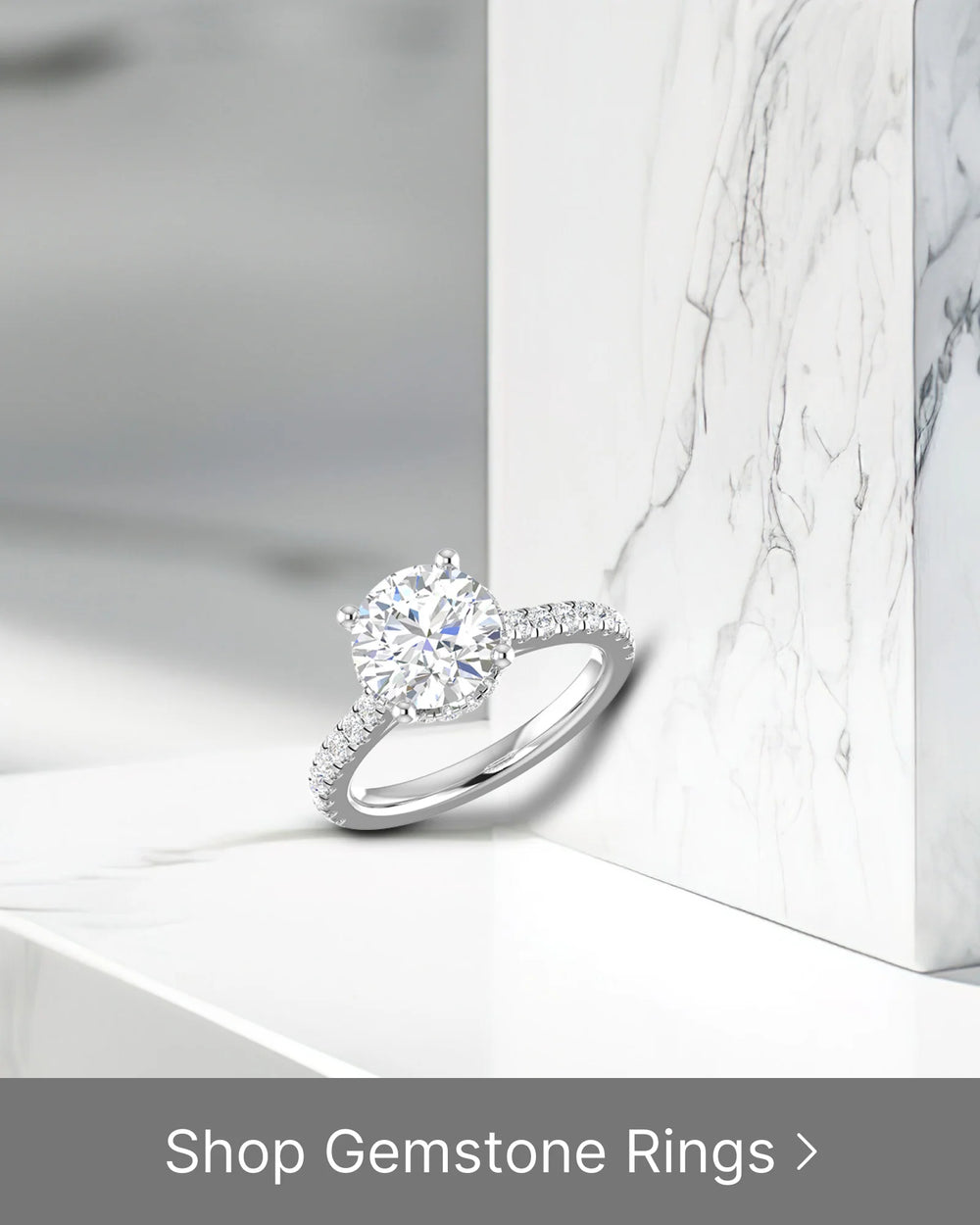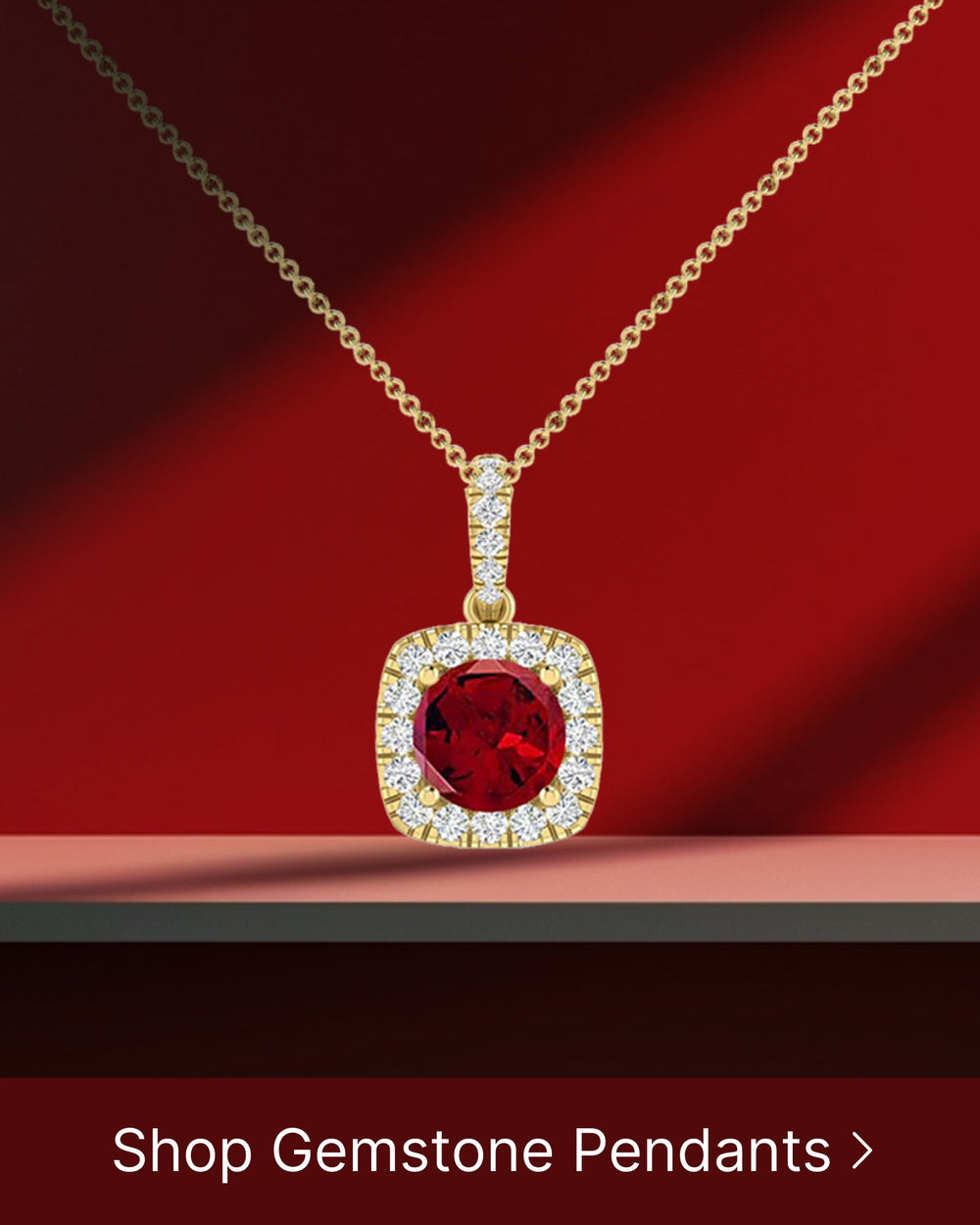In recent years, the world of jewelry has witnessed a fascinating transformation with the integration of augmented reality (AR). By merging the digital world with the tangible beauty of jewelry, interactive adornments have become a reality. This article explores the various aspects of augmented reality in the realm of jewelry, from understanding the concept to its impact on design and shopping, as well as the future prospects it holds.
Understanding Augmented Reality in Jewelry
Before delving into the realm of augmented reality and its alliance with jewelry, it is essential to grasp the concept itself. Augmented reality refers to the integration of digital elements into the real-world environment, enhancing the user's perception and interaction with their surroundings. In the context of jewelry, this technology opens up new possibilities for exploration and self-expression.
Imagine a world where your jewelry is not just a static accessory, but a portal to a realm of endless creativity and personalization. Augmented reality brings this vision to life, offering a seamless fusion of the physical and virtual realms. Through the utilization of cameras, motion sensors, and computer-generated graphics, it overlays digital elements onto real-world objects, providing a heightened sensory experience. This blend of technology and craftsmanship has sparked a revolution in the world of jewelry.
The Concept of Augmented Reality
Augmented reality relies on computer algorithms to interpret the environment and generate virtual content. By analyzing the user's surroundings, AR technology can identify the position and orientation of physical objects, allowing for the precise placement of digital enhancements. In the context of jewelry, this means that virtual elements, such as gemstones or intricate patterns, can be dynamically layered onto physical pieces.
But what sets augmented reality apart is its interactive nature. Unlike traditional jewelry, which remains static, augmented reality jewelry invites users to actively engage and personalize their adornments. Imagine being able to try on different gemstone colors, experiment with unique designs, and even change the appearance of your jewelry on a whim. This technology empowers individuals to unlock their creativity and make their jewelry truly one-of-a-kind.
Augmented Reality and Jewelry: A New Alliance
The marriage of augmented reality and jewelry has given birth to a new form of allure. Through the integration of virtual enhancements, traditionally static pieces can now come to life, captivating the senses in unprecedented ways. Imagine wearing a necklace that shimmers and glows with virtual gemstones, or a bracelet that transforms into a mesmerizing pattern with a simple touch. This dynamic interaction with jewelry fosters a sense of playfulness, enabling wearers to actively participate in the design and evolution of their pieces.
Furthermore, augmented reality offers a solution to the limitations of traditional jewelry shopping. Typically, buyers have to rely on their imagination to visualize how a particular piece would look on them. However, with the advent of this technology, the shopping experience is revolutionized, bringing try-on capabilities right at one's fingertips. Imagine browsing through an online jewelry store and being able to virtually try on different pieces, seeing how they complement your style and personality without leaving the comfort of your home.
Augmented reality in jewelry is not just about enhancing aesthetics; it is about creating a deeper connection between the wearer and their adornments. It allows individuals to express their unique identity and style, pushing the boundaries of what is possible in the world of jewelry. As technology continues to advance, the alliance between augmented reality and jewelry will only grow stronger, offering endless opportunities for innovation and self-expression.
The Impact of Augmented Reality on Jewelry Design
Without a doubt, augmented reality has had a profound impact on the design process of jewelry. By bridging the gap between imagination and reality, this technology has revolutionized the way designers create and showcase their pieces. Let's explore the two fundamental aspects where AR has made its mark in jewelry design: revolutionizing the design process itself and enhancing aesthetic appeal.
Revolutionizing Jewelry Design Process
Traditionally, the jewelry design process involved numerous iterations, from sketches to physical prototypes, before finalizing the design. Augmented reality accelerates this process by introducing digital tools that enable designers to visualize and manipulate their creations in real-time.
With virtual 3D models, designers can sculpt and refine their pieces to perfection, exploring different materials, shapes, and styles. This iterative design process not only saves time and resources but also encourages experimentation and unlocks new creative possibilities.
Imagine a jewelry designer sitting at their workstation, wearing a pair of AR glasses. With a wave of their hand, they summon a virtual workspace where they can see their designs come to life. They can rotate, resize, and even animate their creations, all in a matter of seconds. This seamless integration of digital technology into the design process has forever changed the way jewelry is conceptualized and produced.
Furthermore, augmented reality allows designers to collaborate remotely, breaking down geographical barriers. Multiple designers from different corners of the world can join a virtual design session, working together on the same piece in real-time. This not only fosters creativity but also promotes cultural exchange and diversity in jewelry design.
Enhancing Aesthetic Appeal with AR
In addition to streamlining the design process, augmented reality has the power to enhance the aesthetic appeal of jewelry. By overlaying digital embellishments onto physical pieces, designers can create captivating visual effects and intricate patterns that were once impossible to achieve manually.
Imagine a necklace adorned with virtual flowers that bloom and sway with every movement, or a ring that shimmers with a holographic display of colors. Augmented reality allows jewelry to transcend its physical limitations, transforming it into a dynamic and interactive art form.
Moreover, AR allows wearers to personalize their jewelry by swapping gemstones, altering the color palette, or even experimenting with entirely new designs. This level of customization enables individuals to express their unique style and create jewelry that resonates with their personality.
Picture a customer walking into a jewelry store, trying on a bracelet, and using an AR app to instantly change the gemstone from a ruby to an emerald. They can see how each variation complements their skin tone and overall look, making an informed decision about their purchase. Augmented reality empowers customers to become co-creators, ensuring that the jewelry they wear is a true reflection of their individuality.
Furthermore, AR technology can also be used to tell stories through jewelry. By incorporating virtual elements that represent personal memories or symbolic imagery, designers can create pieces that evoke emotions and connect with the wearer on a deeper level. This fusion of technology and craftsmanship opens up a whole new realm of artistic expression within the world of jewelry design.
The Role of AR in Jewelry Shopping
Augmented reality has revolutionized the way people shop for jewelry. With the introduction of virtual try-ons and personalized experiences, the shopping journey has become immersive, interactive, and remarkably convenient. Let's delve into two significant aspects of AR in jewelry shopping: virtual try-ons and personalized jewelry shopping.
Virtual Try-Ons: Changing the Shopping Experience
Gone are the days when customers had to envision how a particular piece of jewelry would look on them. Augmented reality now empowers shoppers to virtually try on jewelry in real-time, eliminating any uncertainty and allowing for informed purchase decisions.
By utilizing their smartphone cameras or AR-equipped mirrors, customers can superpose digital representations of jewelry onto their bodies, accurately visualizing how different pieces will complement their appearance. This virtual try-on capability has not only enhanced the shopping experience but also increased customer satisfaction and confidence in their purchases.
AR and Personalized Jewelry Shopping
Personalization is at the heart of augmented reality's influence on jewelry shopping. By leveraging AR technology, retailers can offer tailored experiences that resonate with individual preferences and tastes.
Whether it be selecting specific gemstones, customizing engravings, or even designing their own unique pieces, augmented reality empowers customers to actively participate in the creation of their jewelry. This level of personalization fosters a deeper emotional connection between the wearer and their jewelry, making it more than just an accessory but a reflection of their identity.
Future Prospects of Augmented Reality in Jewelry
The fusion of augmented reality with the artistry of jewelry has only scratched the surface of its potential. As technology continues to advance and creative boundaries are pushed, the future prospects for AR in the jewelry industry are promising. Let's explore the predicted trends and the challenges and opportunities that lie ahead.
Predicted Trends in AR Jewelry
Industry experts anticipate several trends that will shape the future of augmented reality in the world of jewelry. One significant trend is the integration of AR into social media platforms, allowing users to create virtual try-on experiences and share them with peers. This social aspect will redefine how people engage with jewelry and potentially influence purchase decisions.
Additionally, advancements in holographic displays and wearable AR devices will unlock new dimensions of creativity and interaction. The possibility of wearable AR jewelry, seamlessly blending technology with design, holds immense potential for self-expression and personal adornment.
Challenges and Opportunities in AR Jewelry
While the prospects for augmented reality in jewelry are exciting, there are also challenges to overcome. One major challenge lies in the integration of AR technology into traditional manufacturing processes. Merging craftsmanship with cutting-edge technology requires collaboration and expertise in both domains.
Furthermore, privacy and security concerns surrounding the digital footprint of AR jewelry need to be addressed to ensure consumer trust and data protection. Striking a balance between the capabilities of AR and the ethical considerations is vital for a sustainable and responsible adoption of this technology.
In conclusion, the integration of augmented reality has transformed the art of jewelry into interactive adornments. This technology has revolutionized the jewelry design process, enhanced aesthetic appeal, and transformed the jewelry shopping experience. As the future unfolds, augmented reality holds immense potential, shaping trends and opportunities in the world of jewelry. Brace yourself for a future where jewelry becomes an immersive and personalized extension of self, where the digital and physical realms intertwine to create interactive adornments.






